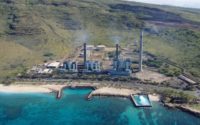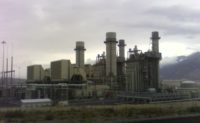Hawaii utility Hawaiian Electric Co. has withdrawn its $1.2-billion plan to upgrade oil-fired power plants to burn natural gas after state regulators rejected its planned merger with Florida-based clean-energy firm NextEra Energy Inc. The Public Utilities Commission on July 15 said the deal would not benefit the utility’s ratepayers or energy goals.
Hawaiian Electric’s conversion to gas was the centerpiece of a larger transition plan to obtain 100% of its electricity from renewable sources by 2045 as required by a 2015 state law. NextEra had claimed it could accelerate the move to renewable energy, which will require an estimated $25.8 billion in capital investment, including transformation of its transmission and distribution system. The $4.3-billion merger, proposed in December 2014, was terminated on July 18, according to NextEra Chairman and CEO Jim Robo.
The plant upgrades were dependent upon regulators approving a supply contract with Canadian liquefied-natural-gas supplier Fortis Energy to import the fuel from its British Columbia plant, beginning in 2021 through 2040. The contract with Fortis was conditioned on regulators’ approval of the merger. Hawaiian Electric on July 19 withdrew its request for approval of the LNG supply contract. “We’ll continue to evaluate all options to modernize generation using a cleaner fuel to bring price stability and support adding renewable energy for our customers,” said Ron Cox, Hawaiian Electric’s vice president of power supply.
On the island of Oahu, Hawaiian Electric’s plans included construction of an $859-million gas-fired plant at the 651-MW Kahe Power Plant, on line since the early 1960s, and retirement of three units. Two remaining oil-fired units at Kahe were to be adapted to burn natural gas, along with units at the Kalaelea Partners plant, also on Oahu, and units on the islands of Maui and Hawaii. The utility estimated the switch to natural gas could save customers from $850 million to $3.7 billion through 2045, depending on future commodity prices.
The plan to use natural gas as a 20-year bridge to reach 100% renewables was the centerpiece of Hawaii Electric’s power-supply improvement plan, filed with regulators in April. The new plant at Kahe was to be on line in late 2020.
In that plan, the utility included supply alternatives that will determine its next steps to reach 100% renewable energy, says Lynne Unemori, a company spokeswoman. Those steps include possibly adding 872 MW of utility-scale solar, 529 MW of onshore wind, 800 MW of offshore wind and construction of an interisland undersea cable that would transport clean energy generated on smaller islands to the heavily populated Oahu. In the next five years, the utility plans to add 351 MW of renewable energy and expects to issue a request for proposals for 225 MW of utility-scale wind and solar for Oahu.
Still, reaching the 100% renewable-energy requirement will be harder without the merger, says Paul Patterson, an analyst with Glenrock Associates.
In rejecting the merger with NextEra, the utility commission said it was concerned about whether the company had the technical, managerial and financial resources to complete the transition. The clean-energy developer has a renewable-power unit and a track record in North America. However, regulators said it lacked direct experience in managing Hawaii’s unique renewable-energy issues—such as integrating into isolated island power grids very high levels of distributed energy resources, particularly from residential rooftop solar-photovoltaic systems. NextEra also would not share details of how it would use its capabilities to achieve state energy goals until after the merger was approved, the commission said.
Hawaii Gov. David Ige (D), who publicly opposed the merger, said, “We look forward to creating a process to find the best partner in the world.” Local media speculated on other prospects, but Hawaiian Electric says no talks are underway. The company says that $95 million it is getting from NextEra as a breakup fee and for related merger costs would be invested in clean-energy projects.





Post a comment to this article
Report Abusive Comment